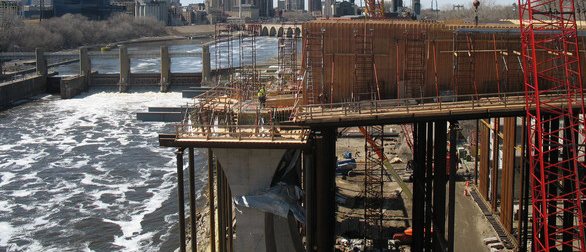Concrete is used in a wide variety of different structures and environments throughout the world. One of the environments toughest on concrete is in marine environments. Concrete has been used successfully as the main construction material for seawalls, breakwaters, bulkheads, and jetties, just to name a few.
However, concrete infrastructure in marine environments can face reduced life spans due to rapid deterioration if the risks aren’t considered during the design process. The exposure to extreme environmental conditions allows water and waterborne chlorides to penetrate the concrete. Water being able to penetrate the concrete leaves the reinforcing steel at risk to corrosion and expansive cracking, which leaves the entire structure at risk to premature deterioration.
 Corrosion is one of the greatest threats against the deterioration of concrete. This is especially true when we consider the extreme conditions marine environments can offer. Corrosion begins to affect a concrete structure’s integrity when the products of corrosion (such as rust) occupy a greater overall volume than the original steel. This expansion creates tensile stresses that cause the concrete to stain, crack, and spall. By the time the signs of damage become visible externally, the extent of corrosion has reached an advanced stage. At that point, regardless of where the site is located, the rehabilitation process will be expensive, complicated, and sometimes, impossible.
Corrosion is one of the greatest threats against the deterioration of concrete. This is especially true when we consider the extreme conditions marine environments can offer. Corrosion begins to affect a concrete structure’s integrity when the products of corrosion (such as rust) occupy a greater overall volume than the original steel. This expansion creates tensile stresses that cause the concrete to stain, crack, and spall. By the time the signs of damage become visible externally, the extent of corrosion has reached an advanced stage. At that point, regardless of where the site is located, the rehabilitation process will be expensive, complicated, and sometimes, impossible.
Ultimately, water permeability of concrete structures will determine the rate of at which a structure will deteriorate. Therefore, in order to ensure a durable concrete structure in marine environments, proper concrete waterproofing is vital.
In June, Kryton provided a technical article for Construction Canada that delves deep into building durable structures in marine environments. Click here to read that entire article.






